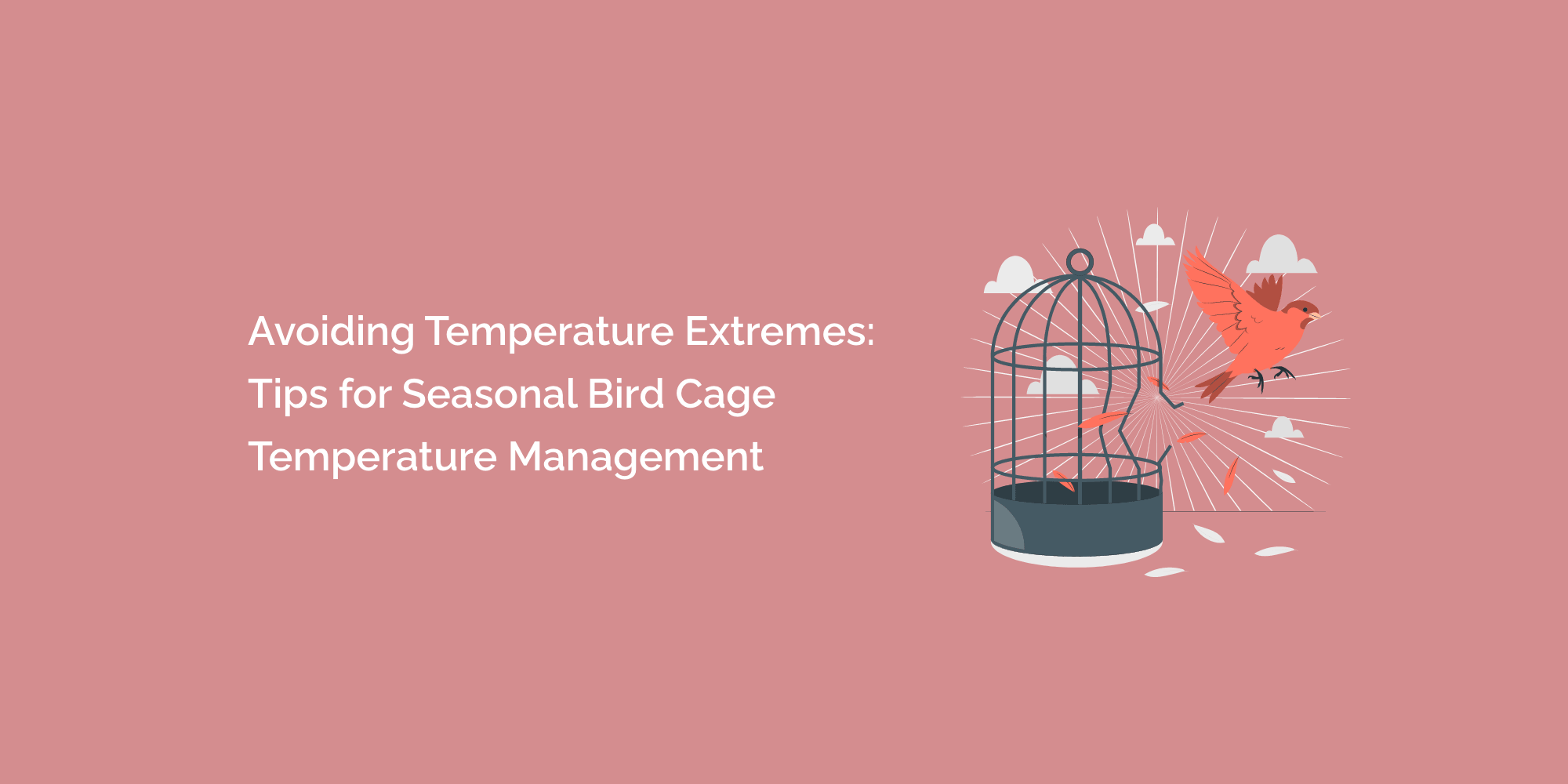As devoted bird owners, we understand the importance of providing our feathered companions with a safe and comfortable living environment throughout the year. One of the significant challenges in bird care is managing temperature extremes during different seasons. Birds are susceptible to temperature fluctuations, and extreme heat or cold exposure can lead to health issues. This comprehensive blog will explore the significance of seasonal bird cage temperature management, tips for avoiding temperature extremes, and how to ensure your avian friends stay healthy and happy regardless of the weather.
Understanding Seasonal Temperature Changes:
Seasonal changes bring varying weather conditions, each challenging for bird owners. Summer typically brings higher temperatures, while winter can be characterized by colder weather. Spring and fall can present fluctuating temperatures as the weather transitions. Understanding these seasonal temperature changes is crucial for creating a comfortable environment for your pet bird.
-
Impact of Summer Heat: During summer, high temperatures can lead to heat stress and dehydration in birds. Their ability to cool down is limited, making them susceptible to heat-related illnesses.
-
Challenges of Winter Cold: Cold temperatures in winter can cause cold stress and respiratory problems and weaken the bird's immune system. It's essential to protect them from drafts and ensure they stay warm.
- Managing Spring and Fall: During the transitional seasons, temperatures vary greatly, and monitoring and adjusting the cage environment accordingly is crucial.
Tips for Summer Bird Cage Temperature Management:
To ensure your bird's well-being during the hot summer months, follow these tips for managing temperature extremes:
-
Provide Shade: If the bird cage is located outdoors, ensure ample shade protects your bird from direct sunlight during the hottest parts of the day.
-
Air Conditioning or Fans: If your bird's cage is indoors, consider using air conditioning or fans to maintain a more relaxed environment. Ensure the pen is not directly in the airflow path to avoid drafts.
-
Hydration: Always provide fresh water, as birds lose moisture through panting and may be more prone to dehydration in hot weather.
-
Cool Baths: Offer your bird opportunities for cool baths, as this helps them regulate their body temperature. A shallow dish of water or a mister can be beneficial.
-
Frozen Treats: You can offer frozen fruits or vegetables as treats, which can help cool down your bird while providing additional hydration.
- Avoiding Direct Sunlight: Ensure the cage is not placed in direct sunlight, as it can quickly heat up and become uncomfortable for your bird.
Tips for Winter Bird Cage Temperature Management:
During colder months, protecting your bird from the cold is essential. Follow these tips for winter bird cage temperature management:
-
Cage Placement: Place the bird cage away from drafty areas and avoid positioning it near doors or windows that may let in cold air.
-
Cage Covers: At night, cover part of the cage with a cage cover to provide additional insulation and protection from drafts.
-
Heating Options: Consider using a safe heating option, such as a bird-safe space heater or ceramic heat emitter, to maintain a comfortable temperature within the cage.
-
Monitoring Room Temperature: Keep track of the room temperature where the bird cage is located and adjust the heating to maintain the ideal range.
-
Snuggle Huts and Perches: Provide snuggle huts or cozy perches to allow your bird to tuck themselves in and conserve body heat.
- Warm Baths: Offer your bird warm baths during winter, as they can help regulate body temperature.
Tips for Spring and Fall Bird Cage Temperature Management:
Spring and fall can bring unpredictable weather, so it's essential to be prepared for temperature fluctuations. Follow these tips for managing temperature changes during transitional seasons:
-
Monitor Weather Forecasts: Stay informed about weather changes to anticipate temperature fluctuations.
-
Easy-to-Move Cage: Opt for a cage that is easy to move indoors during extreme weather conditions.
-
Layering: Use cage covers and extra layers of padding during colder nights to provide additional warmth.
-
Use Portable Heaters: For indoor cages, use portable heaters to move quickly to different rooms as needed.
- Adjust as Needed: Be prepared to adjust heating or cooling options as the weather changes to maintain a comfortable temperature for your bird.
Importance of Temperature Monitoring:
Regular temperature monitoring is essential for maintaining your bird's well-being throughout all seasons. Invest in reliable digital thermometers with remote probes or intelligent monitoring systems that offer accurate and real-time temperature tracking. Position the search at the bird's perch level to obtain the most precise reading of its environment. Set temperature alerts to receive notifications if the temperature exceeds or falls below the recommended range.
Seek Veterinary Attention:
If you notice persistent signs of temperature-related stress, such as panting, lethargy, or breathing difficulties, it is essential to seek veterinary attention immediately. Timely intervention can prevent illness and save the bird's life.
Conclusion:
Seasonal bird cage temperature management is a vital aspect of responsible bird ownership. Understanding the impact of temperature extremes on birds and implementing the tips for each season can ensure your feathered friend stays comfortable, healthy, and happy year-round. Regular temperature monitoring, proper adjustments, and proactive care are vital to creating a nurturing environment that supports your bird's natural needs. Proper temperature management can strengthen the bond with your avian companion and provide them with the best care possible.








